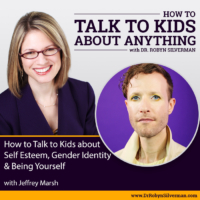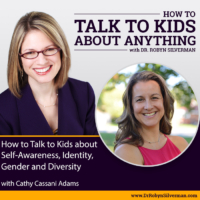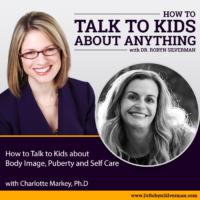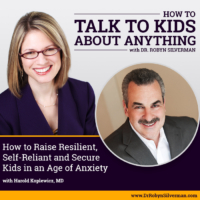Podcast: Play in new window | Download
Subscribe: Apple Podcasts | RSS | More
How to Talk to Kids about Self-Injury
This podcast will focus on self-injury and how to help young people who are self-harming to find healthier ways to cope with stress, pain and big emotions. Those who are self-injuring are not attempting to die by suicide but rather aiming to find a way to feel better. Those who self-injure need help and Dr. Janis Whitlock provides the information we need to best support and understand those who are self-injuring.
Special Guest: Dr. Janis Whitlock
Your 12-year-old daughter has subtle scars on her wrists disappearing up her shirt sleeve- even in the summer when tank tops used to 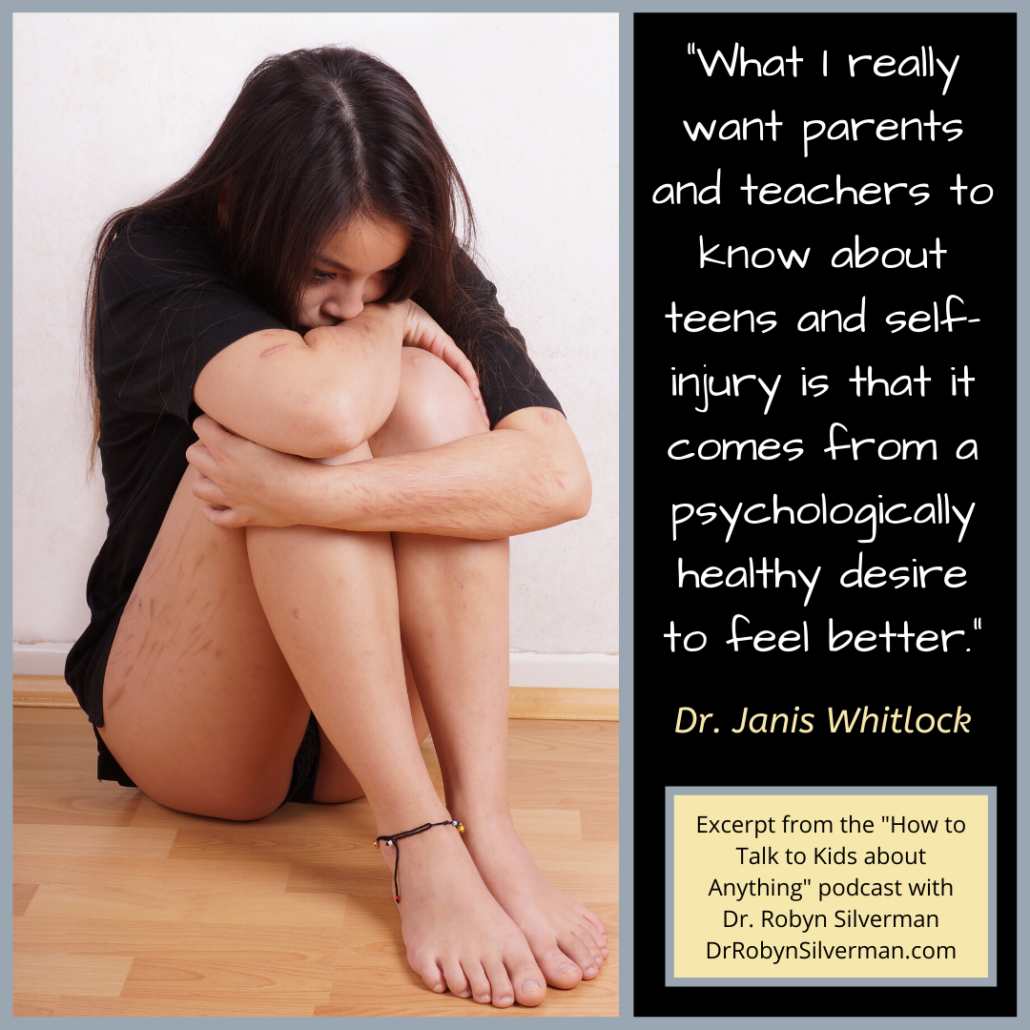 be her norm. Your 14-year-old son has unexplained bruises but no complaints of bullying or sports injury. Your 11-year-old student has burn marks on his or her arms. As many as 12-37% of young people have engaged in non-suicidal self-injury, defined as the deliberate destruction of body tissue without suicidal intent. Their bodies have become a billboard for self-expression—and it’s not limited to any one group of teens- we’re talking about your kid, my kid, the next-door neighbor’s kid- high achievers, shy kids, boys and girls, popular kids, athletes, kids with abuse or trauma history, kids who identify as LGBTQ, and any other group of young people you can imagine from all ethnic groups and backgrounds. Parents who uncover this alarming behavior are gripped by uncertainty and flooded with questions–why is my child doing this? Is this a suicide attempt? A cry for help? Attention-seeking behavior? What did I do wrong? What can I do to stop it? Today; we are going to delve deep into self-harming with self-injury and self-injury-recovery expert, Dr. Janis Whitlock.
be her norm. Your 14-year-old son has unexplained bruises but no complaints of bullying or sports injury. Your 11-year-old student has burn marks on his or her arms. As many as 12-37% of young people have engaged in non-suicidal self-injury, defined as the deliberate destruction of body tissue without suicidal intent. Their bodies have become a billboard for self-expression—and it’s not limited to any one group of teens- we’re talking about your kid, my kid, the next-door neighbor’s kid- high achievers, shy kids, boys and girls, popular kids, athletes, kids with abuse or trauma history, kids who identify as LGBTQ, and any other group of young people you can imagine from all ethnic groups and backgrounds. Parents who uncover this alarming behavior are gripped by uncertainty and flooded with questions–why is my child doing this? Is this a suicide attempt? A cry for help? Attention-seeking behavior? What did I do wrong? What can I do to stop it? Today; we are going to delve deep into self-harming with self-injury and self-injury-recovery expert, Dr. Janis Whitlock.
Janis Whitlock is a Research Scientist in the Bronfenbrenner Center for Translational Research at Cornell University. She is the founder and director of the Cornell Research Program on Self-Injury and Recovery. Her research is dedicated to linking science with efforts to support and enhance the lives of youth, especially in the areas of social and emotional health and well-being. In addition to conducting research in these areas, she is dedicated to making research accessible and useful to those best positioned to make a direct difference in the lives of youth, such as parents and youth-serving professionals. She has written a book, along with co-author Elizabeth Lloyd-Richardson, called “Healing Self Injury: A Compassionate Guide for Parents and Other Loved Ones.”
The podcast provides:
- Why people self injure
- Warning signs of self injury
- What we should do and say if we find that our child is self-injuring
- What we should do and say if our child tells us a friend is self-injuring
Important Messages:
- Common times for self injury 12-15. Executive functioning and limbic system (emotions)- most divergent. Self-injury- can help
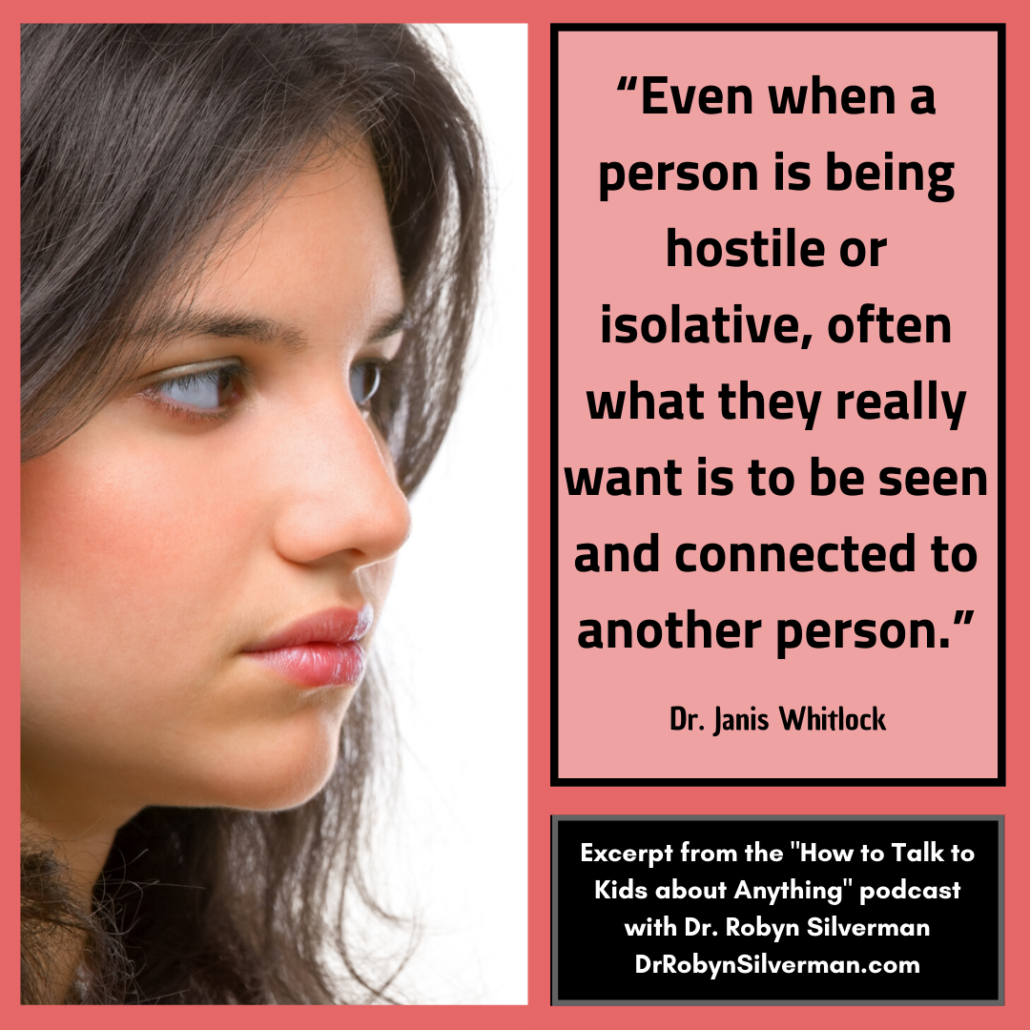 kids cope. Stress relief.
kids cope. Stress relief. - Free, easy, can do at home, stress reliever. (although dangerous)
- Can look a lot like suicide but it isn’t. Self-injury is an attempt to cope.
- Social media- allows people to gather over a certain topic like self injury (not a healthy or good long term strategy and can lead to unintentional death if person cuts too deeply). Sometimes just sharing stories can trigger. The internet provides so much stimulus. Trouble to self regulate.
- On the other hand- can get some support on internet.
- Tip: Know where you are going on line, why you are going there and what you are getting from that site online. Enhance your awareness. What is making them feel better rather than worse?
- TIP: If you find out your child is self-injuring-> examine your feelings about it. Where are the sharp edges of fear? Guilt? Anger? A lot of parents start with fear and then go right into anger.
- Then, prepare to proceed into a conversation about it from a place of compassion. A conversation can go into a lot of different directions and can dictate how future ones go as well.
- Have a conversation that shows a young person that the parent is actively trying to understand (while be authentic).
- Script: “This really scares me, I love you and I am worried that you are going to inadvertently end your life” or “this scares me and I don’t understand what’s happening and I want to…”
- Meta-message: “I love you and I am open, willing and wanting to understand what’s happening to you.” This is a very different conversation than one that is lead by a parent who brings all of their anger and anxiety and angst and fear and guilt to a child. Can wind up making a child feel that they are hurting their parent- that will shut doors.
- Parents: Often parents feel guilt. How did I cause this? Life is messy. Divorce, trauma, financial stress. Parents need to know that they didn’t cause it.
- No matter what parents think they do or worry that they do to contribute to the onset, they are absolutely essential parts of the recovery process.
- With parents, deepest vulnerability and authenticity can happen.
- Often told that peers matter most in adolescence- but parents matter even more in the recovery process. Not absolutely necessary- but makes a big difference for a child in recovery if s/he has a strong, authentic and vulnerable connection with a parent.
- No magic bullet. Parents also struggle with this. Often feel like we have power in child’s life- but there is a lot of other stuff out there. Complicated world in a complicated time.
- Want to crawl underneath our children’s skin and do the work for them. Parent journey that walks beside the child who self injures is about control and lack of control. At the end of the day, it’s your child has to be the one who does the work.
- Aim to support your child without trying to fix it. Otherwise creates power struggles. Gifts along the way. Deeper wisdom. Deeper connection.
- Not helpful: anything that will end up in power struggle. If trying to limit exposure to certain friends or methods, do it through agreements NOT mandates. Mandates create power struggles. Might not get everything you want. Needs to be honest.
- Script: “I would really like it if you no longer hung out with this person because when you do, you come back agitated.”
- Get educated- self injury recovery resources. When you can explain what’s going on physiologically, you can get an aha moment. Then use compassion and relational techniques to have conversation.
- Active listening.
- Agreements.
- Therapy. Find someone you trust that you can talk it through with—parents should have their own therapist. Parents need support too.
- Questions: What are some negative things or positive things that friends do to cope with negative feelings? Can open up conversations to drug use, eating disorders and self injury. Don’t just focus on self injury.
- “I heard this great podcast today about self injury. Have you ever heard of that? Do you have any friends who have done that? What do you know about it?” Ask questions. Become curious about the exposure and what do they know. If it’s very comfortable and open, you can ask if the child has thought about it or tried it- but don’t push.
- Question: Are they worried about their friend- why or why not? How long have you noticed this with your friend? One time? Multiple times? Then you will need to reach out to the school or the parent- with resources.
- Kids can’t really help other kids really well with this issue. Must access a school nurse or school psychologist. They can access the family. Lots of people who injure have a trauma in the family- so going to the school is a good move.
- How did people find out about the self injury? Usually outed by a friend. And they are glad that they were outed.
- Script: “I am glad you told me. It’s really important. I’m really concerned about your friend. And I feel that I need to go to the school and talk to them so we can get help for your friend. And I know it’s possible for your friend will trace it back to you- one of the only ways people get better is to get help. It’s too big for a friend to carry- we know that people don’t typically stop if they are just confiding in friends and people who self -injure can wind up self- injuring in ways that are much more extreme than they originally intended.”
- Script: “There may be blow back from you reporting that your friend is self-injuring but you did the right thing.” People do come around and realize it was a gift. Other relationships are burned by this.
- How can a relationship be built a secret? Kids feel torn. Friend want them to keep it a secret. They want to be a friend. So it can be confusing.
- Honesty is the best way to go. “Sweetie- I’ve noticed some scars on your arm. I’m worried that things aren’t well for you. I’ve noticed you are having a hard time and I want to support you.” Authentic. Honest. Based on deepest desire to understand and support. But a lot of times this isn’t the honest truth- it’s to control and stop it. Recovery is about parents, family and the person who is self-injuring.
- What I really want parents and teachers to know about teens and self-injury is that it comes from a psychologically healthy desire to feel better.” Stop focusing on the thing- and instead focus on the fact that these people want to feel better, you can work with that. Needs to feel integrated- body and mind. Also can be a bid for connection. Even if they feel hostile- they want to feel seen and connected to another person. Some are punishing themselves. They need to know they don’t have to hurt themselves.
- Behavior is last thing that changes- first changes in how they handle emotion, a little more able to hear what they weren’t able to tolerate before? Uptick in being social. Notice- that their thoughts and expressions are less harsh.
- Parents are not alone.
- Self-injury- people who self-injury are often very perceptive about emotion. That’s a gift to have such intense emotional experiences. Many will stop self injuring and will use sensitivities to help others. Tone of voice matters. So perceptive. Opportunity to broaden understanding.
Notable Quotables:
- “Self injury is an attempt to cope.”
- “It’s important for people to be mindful of where they are going online, why they are going and what they are
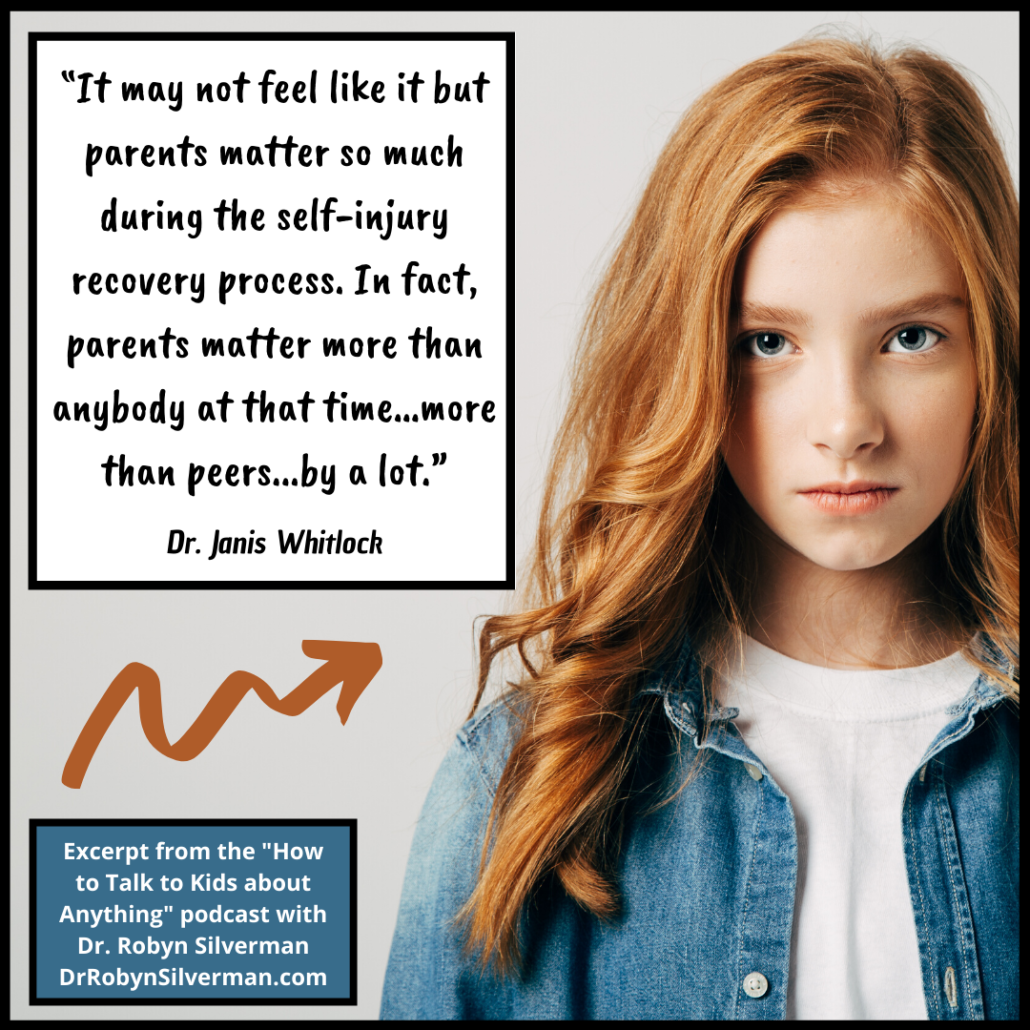 getting online…For those in treatment for self harming, it’s an opportunity to start to enhance awareness of where they are going online and what’s making them feel better and what’s making them feel worse.”
getting online…For those in treatment for self harming, it’s an opportunity to start to enhance awareness of where they are going online and what’s making them feel better and what’s making them feel worse.” - If you find out your child has been self-injuring, “the first step is to examine your own feelings about it. Where are the sharp edges of fear? Guilt? Anger? Then, prepare to proceed into a conversation about it from a place of compassion.”
- “A conversation that comes from a place of compassion can lead to a very different place than one that comes from a parent who brings all of their anxiety, angst, fear, anger and guilt to a child. It can end up feeling to a child that they hurt their parent or doing something wrong and that kind of experience is probably going to shut doors.”
- “Parents matter so much. It really helps to have adults around when a young person is in the recovery process—not just peers. And parents matter more than anybody…by a lot.”
- “With parents, it’s often the deepest vulnerability and deepest authenticity often can happen and needs to happen in order for recovery to happen.”
- We live in a complicated world in a complicated time. There’s a limit to what parents can do.
- “Parents struggle to let go of control. They want to crawl under their children’s skin and fix it for them. The parent journey that walks along the track of a child who self-injures is one about control and lack of control. But at the end of the day, it’s your child who has to be the one who does this inner work.
- Parents need to learn how to separate out what they can and can’t do—how they can support their child without trying to fix it.”
- What I really want parents and teachers to know about teens and self-injury is that it comes from a psychologically healthy desire to feel better.”
- “Even when a person is being hostile or isolative, often what they really want is to seen and connected to another person.”
Resources:
- Self-injury and recovery resources http://www.selfinjury.bctr.cornell.edu/




